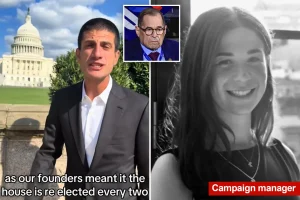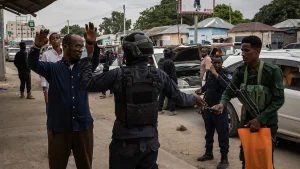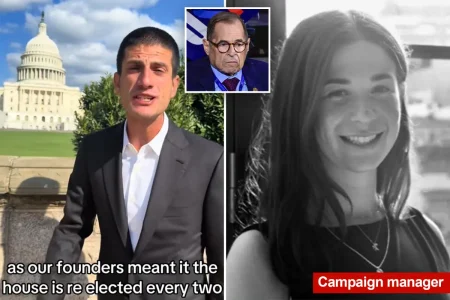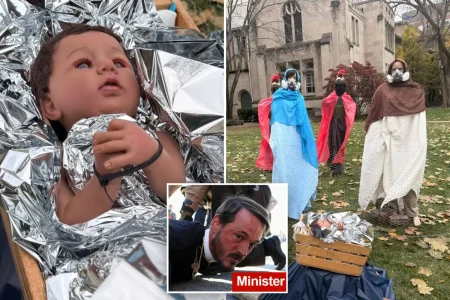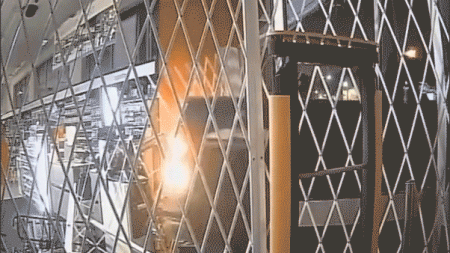Russia Escalates Conflict with Second Major Attack in 72 Hours as Peace Efforts Stall
In a dramatic escalation of hostilities that has sent shockwaves through diplomatic circles, Russia launched another extensive military assault against Ukraine this week, marking the second major offensive in just three days. The intensified campaign comes as Kremlin officials have explicitly rejected peace initiatives proposed by both Ukrainian leadership and the United States, raising serious concerns about the conflict’s trajectory and the diminishing prospects for a negotiated resolution in the near term.
Escalation Pattern Emerges as Russian Forces Mount Consecutive Attacks
The latest assault represents a significant intensification in Russia’s military strategy, following what analysts describe as a carefully coordinated pattern of escalation. Military observers noted that this second major offensive employed a combination of long-range missiles, drone strikes, and concentrated artillery bombardments targeting critical infrastructure and civilian areas across multiple Ukrainian regions. “What we’re witnessing is not merely a continuation of hostilities but a deliberate acceleration,” explained Dr. Elena Voronova, senior defense analyst at the European Security Institute. “The timing and scale of these consecutive attacks suggest a strategic shift toward more aggressive posturing rather than battlefield necessity.” Intelligence reports indicate the latest assault caused substantial damage to energy facilities, transportation hubs, and residential districts, further straining Ukraine’s already compromised civilian infrastructure as winter approaches. Ukrainian emergency services reported dozens of casualties, though exact figures remain difficult to verify amid the ongoing operations. The proximity of these two major assaults—separated by just 72 hours—has left Ukrainian defense forces with minimal recovery time, creating additional challenges for their strategic response capabilities.
Kremlin Rebuffs Diplomatic Overtures as International Concern Grows
Despite mounting international pressure and explicit calls for de-escalation, Russian officials have categorically dismissed recent diplomatic initiatives aimed at restarting peace negotiations. In a statement that left little room for interpretation, Kremlin spokesperson Dmitry Peskov characterized the latest proposals as “fundamentally unacceptable” and “disconnected from the realities on the ground.” The diplomatic rebuke came in direct response to a multilateral framework presented jointly by Ukrainian officials and U.S. diplomats last week, which had proposed a phased ceasefire and monitored withdrawal of forces from contested territories. “The timing of these attacks appears deliberately synchronized with peace overtures, possibly to undermine them before they gain traction,” noted Ambassador Jonathan Reynolds, former U.S. diplomatic envoy to Eastern Europe. This rejection marks the fourth time in recent months that Moscow has spurned attempts to establish a diplomatic dialogue, reinforcing perceptions that Russian leadership remains committed to pursuing military objectives rather than negotiated solutions. Western intelligence sources suggest the Kremlin may be calculating that continued military pressure will eventually force Ukraine to accept terms more favorable to Russian interests, though this strategy risks further international isolation and enhanced sanctions.
Humanitarian Crisis Deepens as Civilian Infrastructure Bears Brunt of Attacks
The human cost of this renewed offensive continues to mount alarmingly, with international aid organizations reporting severe humanitarian consequences throughout affected regions. The World Health Organization documented strikes affecting at least seven medical facilities during the most recent assault, further compromising an already strained healthcare system. “We’re seeing a systematic degradation of essential services that civilians depend on for survival,” explained Maria Kolensky, regional director for Médecins Sans Frontières. “Hospitals are operating on generator power, medical supplies are dwindling, and staff are working around the clock under incredibly dangerous conditions.” The targeting of energy infrastructure has left approximately 1.3 million households without reliable electricity, according to Ukraine’s energy ministry, creating cascading effects on water purification systems, heating capabilities, and communications networks. Displaced persons camps near western Ukrainian cities have reported significant influxes of new arrivals fleeing the intensified bombardments, creating additional pressure on humanitarian resources already stretched thin by nearly two years of conflict. United Nations officials have expressed particular concern about vulnerable populations, including the elderly, disabled individuals, and families with young children, who face disproportionate risks from infrastructure disruptions as temperatures begin to drop across the region.
International Response Fractured as Global Powers Navigate Complex Geopolitical Landscape
The international community’s response to this latest escalation has revealed persistent divisions among global powers regarding approaches to the conflict. Western nations, led by the United States and European Union members, have responded with sharp condemnations and promises of enhanced military and humanitarian support for Ukraine. “These unconscionable attacks on civilian infrastructure represent a clear violation of international humanitarian law and must not go unanswered,” stated NATO Secretary-General Jens Stoltenberg during an emergency press briefing. In contrast, nations with closer ties to Moscow have adopted more measured positions, with China calling for “restraint from all parties” while avoiding direct criticism of Russian actions. This diplomatic bifurcation has complicated efforts to build international consensus around peace initiatives or coordinated pressure campaigns. Meanwhile, the United Nations Security Council remains effectively deadlocked on meaningful intervention due to Russia’s veto power, highlighting the structural limitations of existing international mechanisms for conflict resolution. The disparate responses underscore the broader geopolitical complexities surrounding the conflict, which increasingly functions as a proxy for larger tensions between competing global power blocs with divergent visions for the international order.
Military Analysts Assess Strategic Implications as Conflict Enters New Phase
Defense experts monitoring the conflict have begun reassessing their strategic forecasts in light of this apparent escalation, with many warning that the conflict may be entering a more dangerous and protracted phase. “What we’re observing suggests Russia is preparing for sustained high-intensity operations through winter, contrary to previous expectations of a seasonal reduction in hostilities,” explained Colonel Marcus Hartmann, senior fellow at the Institute for Strategic Studies. Satellite imagery analyzed by independent monitoring groups has identified significant Russian troop movements and logistical buildups along multiple fronts, indicating preparations for potential ground offensives to complement the aerial bombardment campaign. Ukrainian military officials have acknowledged the mounting pressure but maintain their forces remain capable of effective resistance despite material challenges. “Their strategy appears aimed at overwhelming our air defense capabilities through saturation attacks, creating windows for follow-up strikes against hardened targets,” noted Ukrainian Air Force spokesperson Yurii Ihnat in a statement to international press. Military experts suggest the coming weeks will prove critical in determining whether this escalation represents a temporary surge intended to improve Russia’s negotiating position or signals a fundamental shift toward a more aggressive and comprehensive military campaign designed to achieve decisive battlefield advantages before winter fully sets in.
Long-term Prospects for Resolution Dim as Conflict Dynamics Harden
As the conflict approaches its second full year with no resolution in sight, the prospects for a negotiated settlement appear increasingly remote given the latest developments. The repeated rejection of peace initiatives, coupled with the intensification of military operations, suggests a hardening of positions on both sides that complicates potential off-ramps from the conflict. “We’re witnessing the entrenchment of a dangerous dynamic where military escalation and diplomatic impasse reinforce each other,” explained Dr. Nadia Karimova, conflict resolution specialist at the Geneva Center for Security Policy. Political analysts note that domestic considerations in both countries further constrain leadership flexibility, with Russian state media increasingly framing the conflict in existential terms while Ukrainian public opinion remains firmly opposed to territorial concessions under duress. The economic toll continues to mount not only for the direct participants but across global markets, particularly in energy and food security sectors where disruptions have triggered inflationary pressures and supply uncertainties. As winter approaches, humanitarian concerns will likely intensify, potentially creating additional pressure points for international intervention. However, without significant shifts in the fundamental positions of key stakeholders or a decisive change in battlefield dynamics, the conflict appears positioned to continue its destructive trajectory into the foreseeable future, with profound implications for regional stability, international norms, and the suffering civilian populations caught in the crossfire of geopolitical competition.
